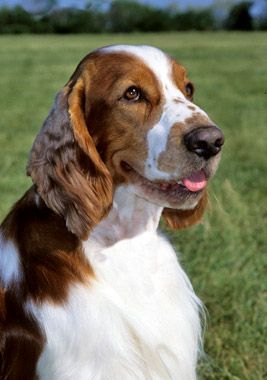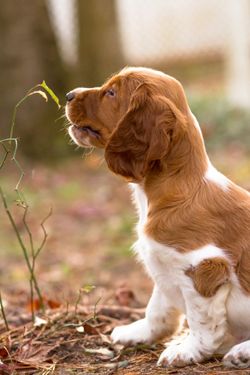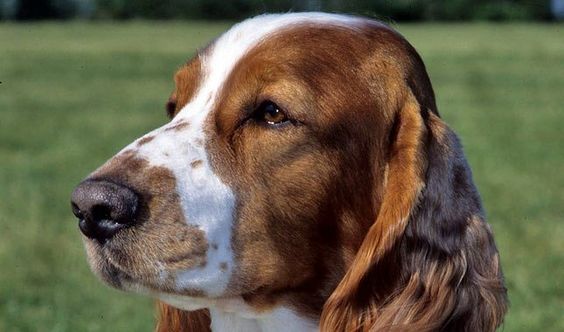Welsh Springer Spaniel
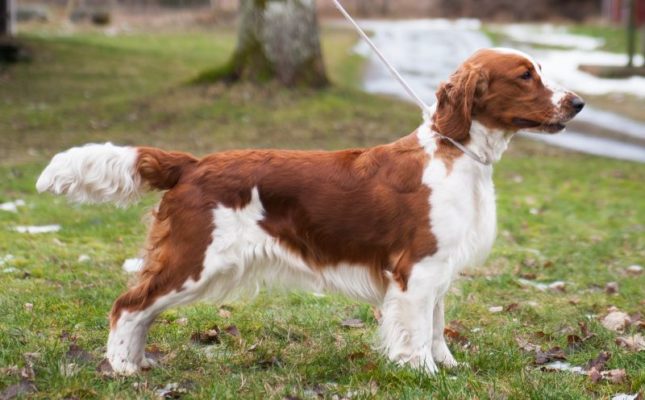
The Welsh Springer Spaniel is an energetic and fun dog with a great personality. Pets of this breed are very loyal to the owner and his family. They are very friendly and sociable. They get along well with other animals. The exception is birds, to which the dog may react as to the game.
Table of Contents
Breed Information
| Another Name | Llamgi Cymru, Welsh Springer, Welsh Starter |
| Origin | Wales |
| Height | Males 46-48 cm Females 43-45 cm |
| Weight | 16-25 kg |
| Fur | Long |
| Color | Bright red with white |
| Lifespan | 12-15 years |
| FCI Classification | Retrievers – Flushing Dogs – Water Dogs |
| Group | Hunting dogs, dogs for kids, dogs for apartments |
| Price | $1200-1400 |
Breed Photos
Origin History
It is believed that the breed is descended from the Welsh Spaniel and belongs to the land dog group. In the 18th century, Welsh Springers were the most popular hunting dogs in British aristocratic circles. In the following century, the English Springer took over. Later, the Welsh breed regained the lead.
In 1902, the Welsh Springer Spaniel was officially recognized by the British Kennel Club. During World War I, the Springer population suffered greatly. In the 1920s, amateurs began to restore the breed actively. The dog was recognized by the Fédération Cynologique Internationale in 1954.
Appearance
The Welsh Springer Spaniel is a sturdy, well-proportioned, medium-sized dog. The pet’s back is muscular, and the loin is convex. The chest is deep, and the ribs are curved. The neck is long, dry. The head is in proportion to the body; the forehead is convex. The muzzle is straight and square. The eyes are dark brown, small. The ears are long, floppy, tight to the cheekbones.
The spaniel’s limbs are straight, strong, and muscular. The tail of the dog is kept low. On it grows thick straight hair. The hair is long, elastic, and silky. Curly hair is considered a great disadvantage. The color is bright red with white.
Character
The Welsh Springer Spaniel is an energetic and fun dog with a great personality. Pets of this breed are very loyal to the owner and his family. They are very friendly and sociable. They get along well with other animals. The exception is birds, to which the dog may react as to the game. Springers are especially kind to children. They consider them their friends and love to play with them. To strangers, four-footed dogs are indifferent or wary but do not show any particular aggression. In principle, they can be used as guard dogs.
Care
Keeping the Welsh Springer Spaniel in an apartment is not a good idea. It is an agile and energetic dog that requires a lot of physical activity. The best place for the dog will be in a country house with a large area. In any case, the dog must be engaged, a lot of walks in the fresh air.
The Welsh Springer’s coat is long, so it requires some grooming. Comb it with a special brush at least twice a week. Bathe your dog only when necessary. Do not forget to inspect and clean his floppy ears to prevent infections.
Training
In general, the Welsh Springer Spaniel lends itself well to training. It is an obedient and loyal dog, for which early socialization is important. Sometimes the pet may become stubborn. In such cases, show patience and restraint, and reconsider training methods. Yelling and punishing the dog by force is not recommended. He will become even more withdrawn and frightened. Training should be fun and varied. You can choose a playful format so that it is easier for your dog to learn commands. Welsh Springers love hunting; alternatives would also be sports such as obedience, agility, flyball.
Common Diseases
The Welsh Springer Spaniel owns a relatively healthy solid. Has no hereditary diseases, although prone to some ailments such as:
- hip dysplasia;
- von Willebrand’s disease;
- entropion;
- epilepsy;
- eye and ear infections.
At least once a year, take your dog to the vet and get his vaccinations. Clean your dog’s eyes daily and ears three times a week to avoid infections.
Nutrition
The agile Welsh Springer Spaniel requires a balanced diet. Both super-premium dry food and natural food are suitable. If you choose the second option, carefully monitor the diet of the pet. Its basis should be lean raw meat, preferably beef. Vegetables and dairy products will also do. Sometimes give your dog fish, but be careful with porridge not to disrupt the intestinal microflora. Never feed sweet, salty, smoked, fatty meat, or chicken bones to your dog.
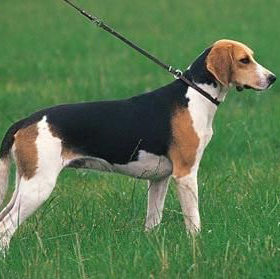 Anglo-Français de Petite Vénerie
Anglo-Français de Petite Vénerie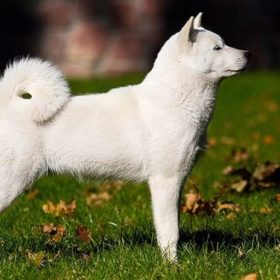 Hokkaido
Hokkaido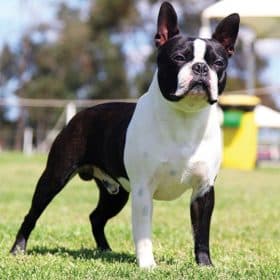 Boston Terrier
Boston Terrier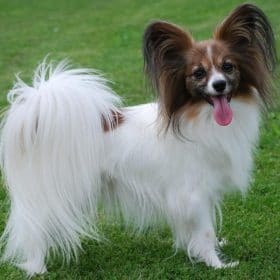 Continental Toy Spaniel
Continental Toy Spaniel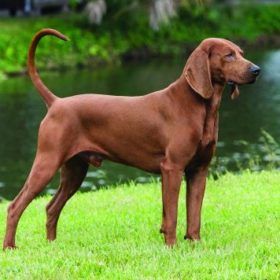 Redbone Coonhound
Redbone Coonhound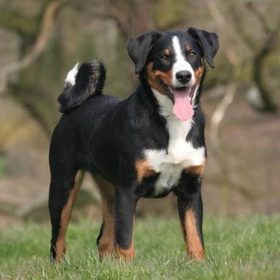 Appenzeller Sennenhund
Appenzeller Sennenhund